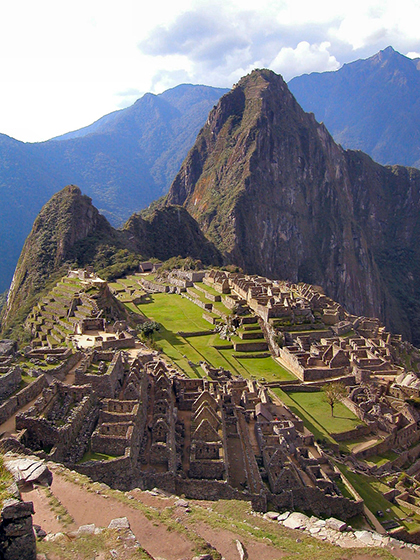How to adjust to altitude changes

You’ve decided to cross Machu Picchu off your bucket list and have planned activities for every second you are there. You’re excited to get going and start seeing things when you arrive and then unexpectedly, altitude sickness hits. Instead of letting the altitude affect your travel plans and activity level, there are things you can do to offset the effects and to minimize the discomfort you are in. If you know you’ll be travelling to a high-altitude location, keep these tips in mind to adjust to the changes quickly and hopefully without symptoms.
Stay hydrated
The best way to combat the dry air is to supplement it with plenty of water. You want to stay hydrated and keep your thirst quenched. The low humidity mixed with the dry air will have you reaching for a water bottle frequently so keep one on you and make every effort to keep it full. In addition to water use moisturizers after showers to keep your skin hydrated instead of parched and dry. If you plan on doing a lot of physical activity you need to boost the amount of water you are drinking even more. Electrolyte sports drinks are specifically created to help you combat losing water through perspiration so keep them around as well.
Protect against the sun
As you may imagine, protecting yourself from the sun is as important as staying hydrated. The less effort you expend dealing with the sun, the better. Lather sunscreen on to protect your skin and wear a hat with a wide brim and sunglasses to protect your eyes. You’ll be happy you did when everyone else is caught unprepared in the sunlight that’s made stronger by a thinner ozone layer.
Be aware of altitude sickness
About 20% of people will develop mild altitude symptoms at elevations between 1,800 and 3,000m. Altitude sickness occurs when you aren’t getting enough oxygen because of the thin air at high altitudes. Altitude sickness symptoms may be hard to recognize on their own, but all together they paint a clear picture of what is going on:
- loss of appetite
- nausea or vomiting
- weakness and fatigue
- shortness of breath upon exertion
- drowsiness
- persistent rapid pulse
- dizziness or light-headedness.
The only way to prevent the symptoms seems to be staying at lower altitude levels, but the effects can be lessened by staying hydrated and climbing slowly with plenty of rest.
Acclimate gradually
If your schedule will allow for it, take your time to climb in altitude. Experts suggest going no more than 1000 or 2000 feet up per day. This scheduled increase will let your body adjust to the changes and handle the symptoms better. While you are doing this, you should also generally avoid alcohol and sleeping pills as they will both slow your body’s acclimation to the elevation. When you arrive at your destination you should try to get plenty of rest without strenuous activity—many symptoms are made worse by exercise too soon after arriving in a higher elevation.
Maintain iron levels
Iron helps with oxygen delivery. When you are at higher altitudes the oxygen is thinner, so combat this by increasing the amount of iron you take. You can do this by taking supplements or eating iron-rich foods like spinach or red meat.
With these ideas and tips in your back pocket, you’ll be able to adjust to altitude more gracefully than those without. To protect your holiday, gear and health during your trip be sure to look at the travel insurance plans Cover-More New Zealand offers. It’s easy to get the travel insurance that’s perfect for your specific needs, whether it’s a high-altitude destination or travelling around New Zealand.